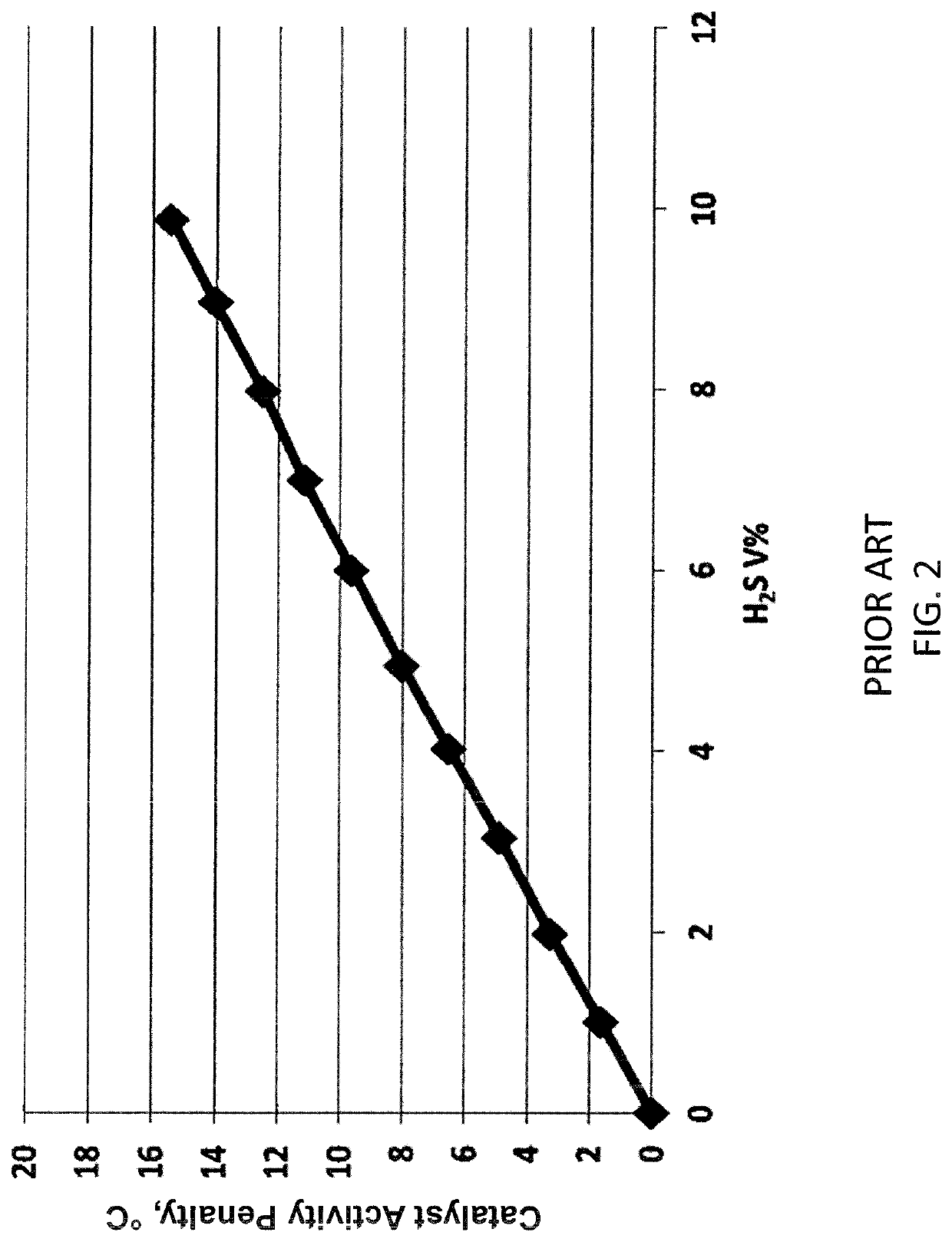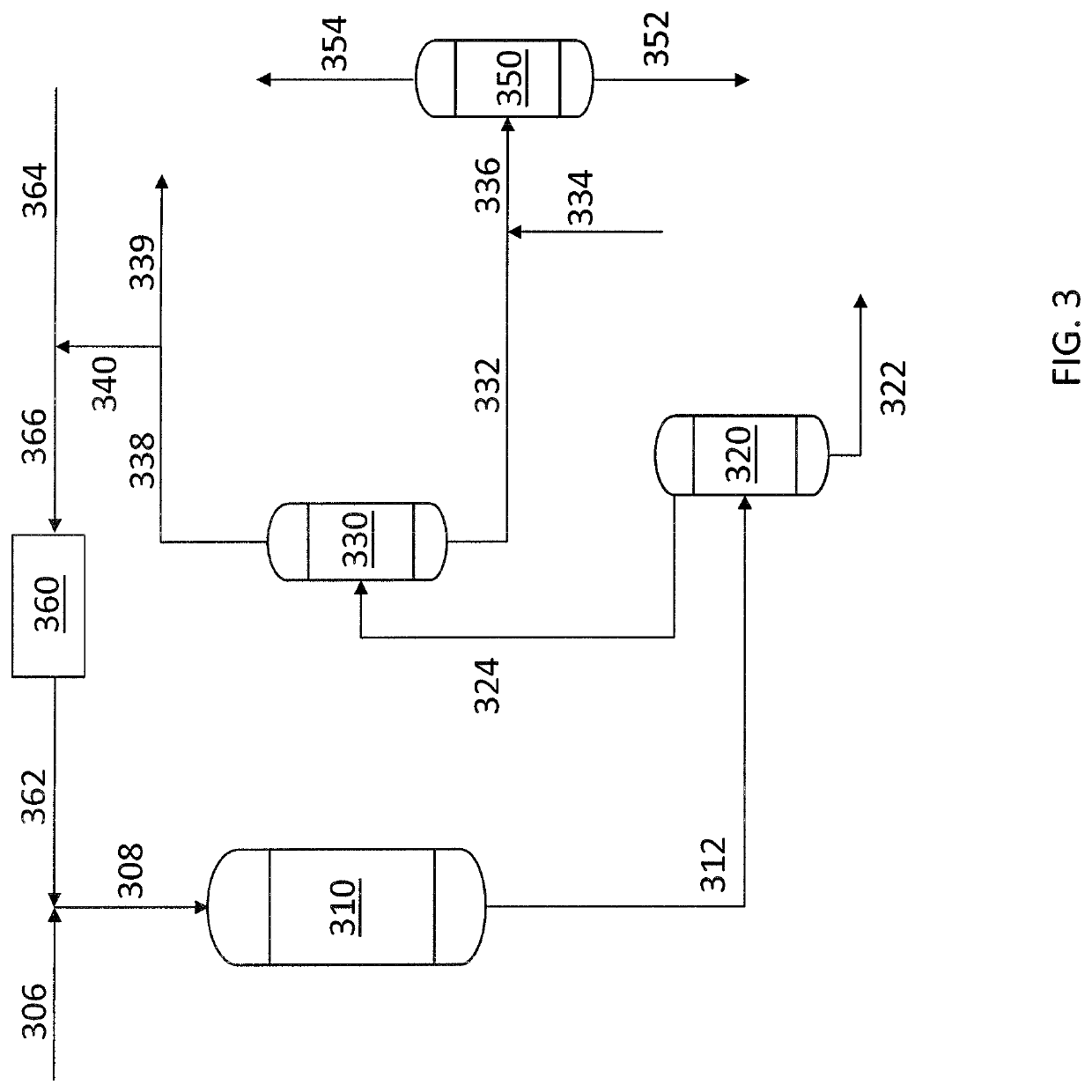Direct oxidation of hydrogen sulfide in a hydroprocessing recycle gas stream with hydrogen purification
a technology of hydroprocessing and recycle gas stream, which is applied in the direction of liquid degasification, separation process, effluent separation, etc., can solve the problems of reducing product quality and product yield, affecting process efficiency, and shortening the catalyst life cycle, so as to prolong the service life and minimize mechanical wear of the catalyst , the effect of stable catalyst operation over tim
- Summary
- Abstract
- Description
- Claims
- Application Information
AI Technical Summary
Benefits of technology
Problems solved by technology
Method used
Image
Examples
example 1
[0052]An effluent gas stream from a hydrocracking unit HP hot liquid / gas separator containing 67 V % of hydrogen is passed to an absorption column to remove methane, heavier hydrocarbons, and hydrogen sulfide. The sour bottoms containing methane and heavier hydrocarbons, and hydrogen sulfide are sent to an oxidation zone to remove the hydrogen sulfide and produce elemental sulfur. The process increases hydrogen purity from 67 V % to 89 V %. The operating conditions for Example 1 are provided in Table 1 below.
[0053]
TABLE 1Variable\VesselUnits430440450Temperature° C.min / max−1 / −180 / 14100 / 350PressureBarmin / max50 / 20050 / 200 1 / 10LHSVh−11 0.5ResidenceSeconds0.8TimeSolvent / OilLt / Kg-41.6RatiomolO2 / S ratioMol / Mol1.5GHSVh−1min / max1000 / 5000 1000 / 5000 1000 / 5000
[0054]Reference is now made to the embodiment of FIG. 4 in which the initial process steps correspond to those described in connection with FIG. 3. The liquid heavy hydrocarbon feed containing sulfur compounds (406) is mixed with the compre...
PUM
| Property | Measurement | Unit |
|---|---|---|
| temperature | aaaaa | aaaaa |
| pressure | aaaaa | aaaaa |
| temperature | aaaaa | aaaaa |
Abstract
Description
Claims
Application Information
 Login to View More
Login to View More - R&D
- Intellectual Property
- Life Sciences
- Materials
- Tech Scout
- Unparalleled Data Quality
- Higher Quality Content
- 60% Fewer Hallucinations
Browse by: Latest US Patents, China's latest patents, Technical Efficacy Thesaurus, Application Domain, Technology Topic, Popular Technical Reports.
© 2025 PatSnap. All rights reserved.Legal|Privacy policy|Modern Slavery Act Transparency Statement|Sitemap|About US| Contact US: help@patsnap.com



